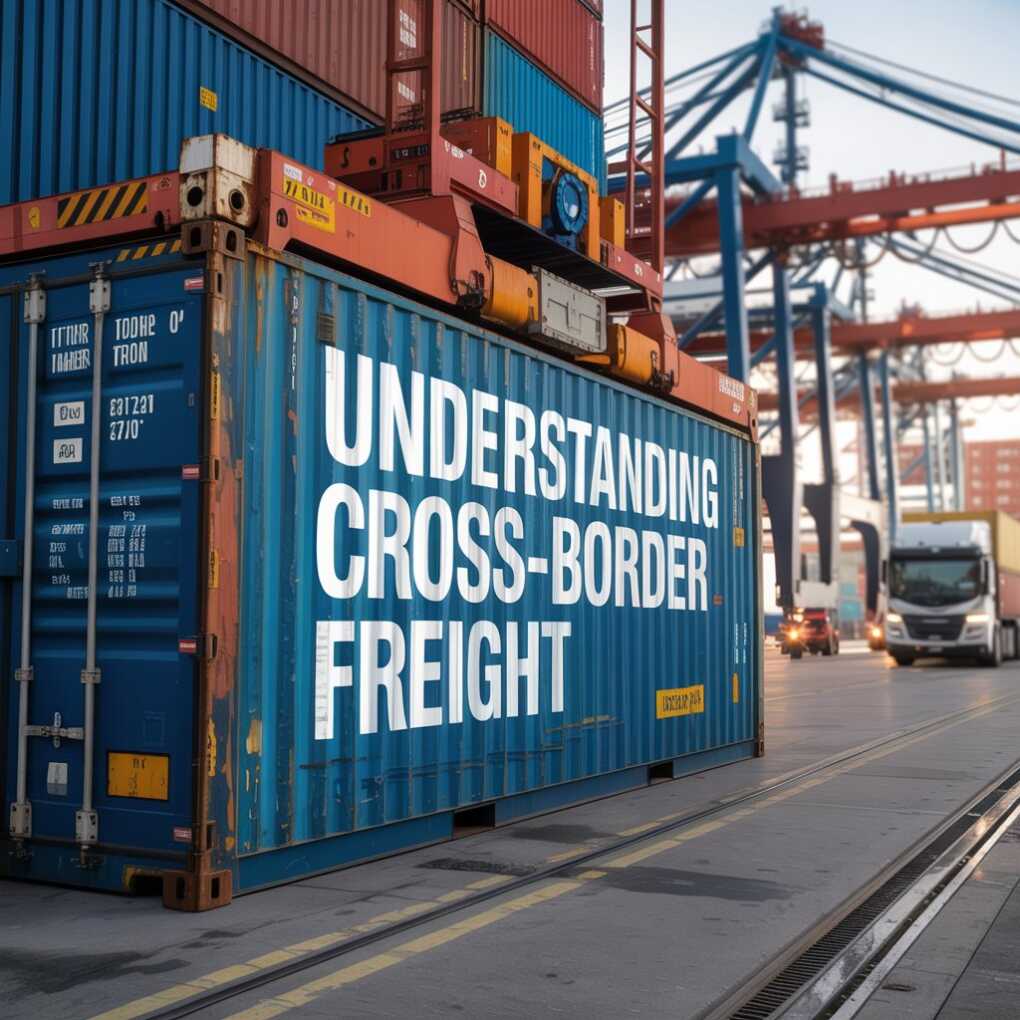When it comes to trade and logistics, the movement of goods between the United States and Canada plays a vital role in the economy of both nations. Shipping across the border requires more than simply packing goods and sending them on a truck—it involves regulations, customs processes, carrier coordination, and careful planning. Businesses of all sizes, from small suppliers to large corporations, rely on these routes to ensure their products reach customers efficiently and on time. We will explore what makes cross-border freight unique, the factors that influence shipping between the US and Canada, and how businesses can manage this process successfully.

Key Elements of Shipping from the US to Canada
The Importance of Cross-Border Trade
Trade between the United States and Canada is among the largest and most consistent in the world. Both nations share not only one of the longest international borders but also deeply interconnected supply chains. Whether it’s raw materials, consumer goods, automotive parts, or food products, cross-border freight ensures industries on both sides function smoothly. For many companies, having a reliable shipping process is not optional but essential to sustaining operations and customer satisfaction.
Understanding the flow of goods, border requirements, and logistical planning in shipping from the US to Canada is crucial for business growth. Without proper planning, delays at the border, unexpected fees, or even rejected shipments can disrupt entire supply chains. By treating shipping as a strategic component of business rather than just a delivery method, companies place themselves in a stronger position to succeed in both domestic and international markets.
Documentation and Customs Requirements
One of the most important steps in cross-border shipping is managing documentation and customs. Every shipment from the US into Canada requires proper paperwork, including a commercial invoice, packing list, and often certificates of origin. Customs officials on both sides must review and approve the shipment before it can proceed, and any errors or missing documents may result in significant delays. Businesses must also be aware of tariff codes and product classifications to ensure compliance with Canadian import regulations. Another important factor is duties and taxes, which vary depending on the type of goods being shipped.
Working with customs brokers can simplify this process by providing professional guidance and ensuring all paperwork is filed correctly. While it might feel like an added step, getting customs documentation right is the difference between a shipment arriving smoothly or being held up for days or weeks. For businesses shipping frequently, building a routine system for managing documents saves time and reduces stress.
Transportation Modes and Routes
Freight moving from the US to Canada can be transported by truck, rail, air, or a combination of these. Trucking remains the most common method, particularly for short and medium distances, as the two nations share many well-established highway routes. Rail shipping is often used for bulk items or heavier loads, while air freight is reserved for urgent or high-value goods requiring rapid delivery. Each mode of transportation comes with its own advantages and challenges.
For example, trucking offers flexibility and accessibility, but fuel costs and weather conditions can impact schedules. Rail may be cost-effective for large shipments, yet it lacks the same speed and route flexibility. Choosing the correct transportation mode depends on the type of product, delivery timeline, and budget. By carefully evaluating these factors, businesses can align their shipping needs with the right logistical solutions and avoid unnecessary complications.
Managing Costs and Efficiency
One of the biggest considerations for companies shipping from the US to Canada is the cost involved. Transportation expenses, customs duties, taxes, and fuel charges all add up, and businesses must balance these costs while keeping operations profitable. Careful planning can significantly reduce expenses by consolidating shipments, optimizing routes, and selecting the most suitable transportation method. Partnering with reliable carriers who have experience in cross-border freight also improves efficiency, as they understand the intricacies of customs clearance and route planning.
Another aspect of managing cost is technology. Many logistics providers now use tracking systems and digital tools that allow shippers to monitor their goods in real time, reducing the risk of miscommunication and delays. By prioritizing cost management and efficiency, companies are better equipped to provide consistent service to their customers while protecting their profit margins in a competitive marketplace.
Challenges and Opportunities in Cross-Border Freight
Shipping between the US and Canada is not without challenges. Weather conditions, such as heavy snow in winter or flooding during spring, can cause unexpected delays. Border wait times may vary depending on security measures or inspection requirements. Additionally, currency fluctuations and trade policies may affect the overall cost of shipping. However, alongside these challenges are opportunities. The strong trade relationship between the two nations means infrastructure is continually improving, and advancements in digital customs clearance make processing faster than ever before.
Businesses that stay updated with trade policies, adopt flexible logistics strategies, and work closely with reliable transportation partners can turn these challenges into advantages. Rather than viewing cross-border shipping as an obstacle, companies can approach it as a chance to expand reach, build stronger supply chains, and enhance overall growth. With careful planning, even the most complex cross-border freight processes can become a predictable and efficient part of business operations.
Conclusion
Shipping goods from the US to Canada is more than a logistical process—it’s an essential bridge between two closely linked economies. From understanding the importance of trade to managing customs documents, choosing transportation modes, and keeping costs under control, each step plays a vital role in ensuring smooth delivery. While challenges such as weather, border delays, and regulatory changes are part of the process, businesses that prepare well can navigate them successfully. By approaching shipping strategically, businesses secure not only efficient deliveries but also lasting growth.
